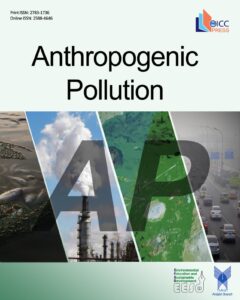Assessing the Spatio-temporal variation of water quality over time at Malelane area in the lower catchment of the Crocodile River, Mpumalanga, South Africa
Authors
- Karabo Concelia Malakane * 1
- Thabang Maphanga 2
- Benett Siyabonga Madonsela 2
- Terry Takalani Phungela 2
- Babalwa Gqomfa 2
Abstract
Freshwater is a limited resource experiencing accelerated contamination in several nations due to various reasons, including both natural and human-induced influences such as climate, topography, mining, industry, and agriculture. South Africa is characterized by water scarcity, a condition exacerbated by its status as a developing nation. Consequently, the country has the dual task of safeguarding water quality while simultaneously striving to enhance water supply and sanitation infrastructure. This study aims to assess the impact of agricultural activities on the water quality of the Crocodile River by using physiochemical tests and a water quality index tool. The grab sampling methodology was utilized on-site to collect water quality parameters which were analysed at a SANAS (South African National Accreditation System) laboratory. Statistical analysis was performed using the Seaborn software due to the extensive dataset contained in the present study. Highest concentrations of NO2+NO3 were recorded in the Autumn season between 2020 and 2022 with levels ranging between 1,2 to 0.7 mg/l. While spring and summer of 2018 and 2019 recorded the lowest concentration of NO2+NO3 at <0.4 mg/L, the low concentrations could be due to the dilution of the summer rainfalls as compared to the high concentrations that were recorded in the drier season of the year leading into winter. This could also explain significant concentration of PO4 (0.35 mg/L) that were recorded during the winter of 2016. The findings indicate that throughout the autumn of 2017 and spring of 2019, the reported ammonia nitrate concentration exceeded 0.225mg/L. The WQI results revealed that the water quality at Malelane is regular at a value of 62.18, which suggests that the quality of the water is average to below standard.



